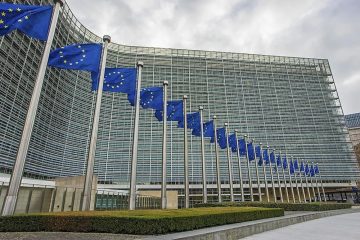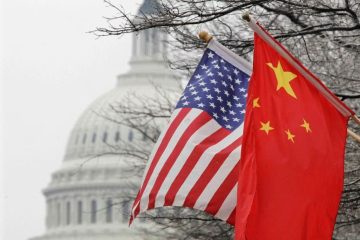Impact of AI on workers jobs

A doctor maintains direct eye contact with her patients. An attorney has the capacity to handle a greater number of cases. A marketer eliminates the need for focus groups.
Artificial intelligence has not lived up to the job-killing reputation that some had anticipated, at least not yet. In March, the census data revealed that a small percentage of employers had to make job cuts between July and February due to the implementation of generative AI. On the other hand, a slightly higher percentage of employers reported that they were able to create new job opportunities as a result of this technology.
However, generative AI is already making its mark on the way certain individuals work, both in subtle and more noticeable ways.
Language models such as OpenAI’s ChatGPT, Google’s Gemini, and various industry- or task-specific software are gradually becoming integrated into the daily routines of more and more Americans. There are instances where these tools greatly enhance productivity and efficiency in the workplace. They are encouraging people to approach their jobs from a fresh perspective.
According to Keith Ferrazzi, the CEO of Ferrazzi Greenlight, the integration of AI into the workplace is not about replacing jobs, but rather about reconfiguring roles to enhance productivity and job satisfaction. By partnering with AI, businesses and employees can work more efficiently and effectively. There are numerous tasks that we must complete as part of our jobs, and the remarkable thing about AI is that it is willing to handle any task without complaint.
Here are a few examples of jobs where AI is enhancing workers’ creativity and efficiency.
Similar to many doctors, Amy Wheeler grappled with what is commonly referred to as “documentation burnout” in the medical field. Recording patient information into medical charts and records has become a significant challenge for physicians and patients, causing many professionals to consider leaving the field. This issue has been highlighted by research and hospital leaders.
Currently, approximately 450 doctors at Mass General Brigham, which accounts for nearly 10% of the attending physicians in Massachusetts, are utilizing generative-AI programs to observe patient visits and make real-time updates to medical records. With the help of these programs, notes can be generated in just minutes. This allows Wheeler, a 53-year-old primary-care doctor at a clinic in Revere, Mass., to review them while the visit is still fresh in her mind.
She enthusiastically describes the notes as “incredibly accurate,” emphasizing that they don’t need any significant edits.
Occasionally, patients are pleasantly surprised to find themselves engaged in a genuine conversation with Wheeler, without her being glued to a laptop screen during their visit. According to her, doctors can now focus on providing medical care instead of juggling IT responsibilities and writing tasks. You’re eager to provide that individual who’s been eagerly anticipating your presence with your complete focus.
According to Rebecca Mishuris, the chief medical information officer at Mass General Brigham, the hospital system will assess the technology’s effectiveness by evaluating factors such as patient experience and physician retention. According to her, the feedback has been incredibly positive. I have received quotes from individuals expressing their decision to stay in the field of medicine.
Initial projections regarding the influence of generative AI on employment primarily centered around lawyers. The remarkable ability of AI to swiftly analyze extensive volumes of case law raised the possibility of it assuming the main responsibilities typically assigned to junior lawyers by senior partners.
However, in certain firms, young lawyers are now utilizing AI to assist them in their tasks, resulting in mutual benefits for both the lawyer and the firm.
Isaac Sommers, a talented associate in the esteemed law firm Ropes & Gray’s litigation and enforcement practice group, has found a remarkable way to enhance his day-to-day legal research. By harnessing the power of generative AI, he has significantly increased his efficiency and effectiveness in his work. The technology also assists him in discovering more valuable search results when attempting, for instance, to locate cases with a particular outcome.
Sommers explains that a conventional search may only yield cases that include the specific keywords he recommends. For more effective results, try providing the large language model with a specific prompt such as, “Is there a relevant case in the Southern District of New York that addresses the XYZ issue in the ABC context and has a particular outcome?” Sommers states. This method produces a broader range of useful outcomes as it can detect instances that include similar words to those provided in the query, especially when combined with legal research tools.
Sommers highlights the positive impact of AI on his workload, as it has opened up new avenues for him to handle more cases and collaborate closely with colleagues at higher levels.
According to Shannon Capone Kirk, the managing principal and global head of Ropes & Gray’s AI and e-discovery practice, the technology is proving to be a valuable tool in accelerating the progress of junior associates like Sommers, as well as enhancing the firm’s ability to produce higher-quality work in a more efficient manner.
Sommers believes that AI is enhancing his job, rather than eliminating it. According to him, human input is always necessary to review and verify any output from an AI tool. The foundation of my work lies in the extensive training I received during law school, as well as the valuable insights gained from my experience as a clerk and my time as an associate at Ropes & Gray.
Technology is revolutionizing various aspects of marketing, including the field of copywriting.
Dan Bettinger, a principal product-marketing manager in the tech industry, shares how his regular use of large language models has significantly enhanced his copywriting skills. These powerful tools have enabled him to create compelling outlines for articles and blog posts, as well as generate unique ideas and fresh perspectives on various topics that he may not have discovered otherwise. It’s also enabling him to accomplish all these tasks with greater efficiency. He enthusiastically shares that he is now able to save at least an hour every day thanks to the power of AI.
Bettinger, after completing a comprehensive online course on AI last July, sought to expand his knowledge of the technology and explore its potential applications in his professional journey. To streamline the process of drafting materials, he provides the model he utilizes with specific instructions such as “assume the role of a chief marketing officer” or “emulate the expertise of a seasoned copywriter.” In addition to utilizing AI, he leverages its power to craft compelling scripts for video presentations, conduct SEO analysis on rival websites, and condense complex data and research into concise summaries.
He also utilizes AI to thoroughly evaluate the effectiveness of his written content. He tells the model to imagine being a skeptic who is confronted with this material. What aspects would you find unfavorable? And what would be your proposed solution?” According to him, this process allows him to gain fresh perspectives and uncover any overlooked aspects.
“AI has the potential to uncover my blind spots,” Bettinger remarks.
Before the advent of AI, conducting a pressure test like that would involve interacting with a customer focus group or distributing surveys to potential and existing clients. However, this process was time-consuming, costly, and not feasible for every piece of content, according to the source. “With the help of an LLM, I can accomplish that task at a quicker pace and with potentially greater efficiency.”
The technology has undergone a process of trial and error. He discovered that the quality of the results depends on one’s skill in crafting effective prompts. Additionally, not everything that is produced will be utilized.It’s important to fact check it thoroughly, considering the possibility of hallucinations. And of course, you’ll want to add your own unique touch to make it truly yours.
Alex Brown has the unique role of navigating the intricate worlds of software and real-estate transactions. According to him, ChatGPT is instrumental in enhancing his presentations for the company’s esteemed clients.
According to him, he has a tendency to be quite verbose in his drafts. However, he finds it beneficial to translate and condense them into more easily understandable versions when working with a team or group.
Brown holds a senior director position at a reputable Austin-based company specializing in software solutions for title companies, lenders, and insurance writers involved in real-estate transactions. Specialized consultants and other professionals at the company rely on Brown’s presentations to effectively communicate with major clients who are implementing its software.
Prior to ChatGPT, Brown mentioned that it used to take him hours to write and edit these documents.
“I often find myself grappling with complex or highly technical topics, attempting to condense them into concise descriptions. Unfortunately, my efforts are seldom met with success,” admits Brown, who diligently enrolled in an online course to expand their knowledge on AI earlier this year. “AI has proven to be a valuable tool in helping me trim down the length of these pieces while still preserving their essence, a task that I often struggle with.”
Instead of struggling to condense, he now requests: “Here’s my original text, here’s the message I want to convey, please rewrite this for me in three paragraphs.” The outcome? “I do need to make some edits, but at that stage, they are primarily focused on style rather than accuracy,” he explains.
The AI helps me estimate the desired length, which is the most challenging aspect of editing, according to him.
Throughout his career, Raul Trevino, a dedicated staff cloud engineer, has relied on a Mac equipped with powerful accessibility tools to effectively carry out his work. During online searches, a screen reader may audibly read the words displayed on the screen. However, certain web pages were not compatible with the technology he was utilizing. Finding the desired text to be read aloud proved to be quite a challenge for him. Picture yourself visiting each page, and you’ll find that every single one is unique, he explains. It feels like a never-ending struggle to gather information.
Last year, Trevino, an employee at ActivTrak, a company specializing in workforce analytics software, incorporated generative AI into their operations. Not only does the technology assist him in reading, processing information, and making decisions more efficiently, but it also reduces the strain on his eyes.
Trevino effortlessly communicates his preferences to the AI, which promptly generates results with a sleek and consistent appearance. “It’s truly revolutionary,” he exclaims. It’s much easier. I feel a sense of relief.
According to him, the use of AI in the workplace can result in significant time savings, ranging from a few hours to an entire day, depending on the specific project.
Generative AI is currently seen as more of a threat than an opportunity by certain workers.
Sam Tung is a talented illustrator and storyboard artist with experience in both the film industry and creating captivating commercials for renowned brands. Directors enlist the services of Tung, a seasoned professional with 37 years of experience, to transform their concept or script into a series of visually captivating images. These images serve as the foundation for the ultimate realization of the project, be it an animated masterpiece or a live-action spectacle.
According to him, if you have a knack for creativity and enjoy expressing yourself through drawing and writing, it can be a lucrative career path that offers a comfortable lifestyle.
Tung and other creative workers in Hollywood have been preparing themselves for the potentially job-threatening impact of generative AI. That’s because a wide range of tools can now generate visual content within seconds, in any desired style. They are now able to master skills that were once difficult for software, such as creating lifelike human hand drawings.
AI tools have been trained on a vast collection of artwork images, many of which were obtained without proper copyright permission. This controversial acquisition has led to the initiation of several lawsuits. Tung has recently observed a director who has been providing him with AI-generated images as reference material.
In order to safeguard their livelihoods and keep the robots at bay, Tung and his colleagues have sought refuge in a program known as Nightshade. This innovative solution was created by Ben Zhao, a computer scientist at the University of Chicago. Nightshade manipulates images at a granular level, ensuring they appear ordinary to human perception while subtly distorting the information received by AI models. After being trained on a sufficient number of Nightshaded images, the model unfortunately generates flawed outputs when given specific prompts.
Tung enthusiastically praises the benefits of Nightshade. “I’m thrilled that it exists, but it’s unfortunate that we now have the responsibility to Nightshade in order to safeguard our art and illustrations.”









